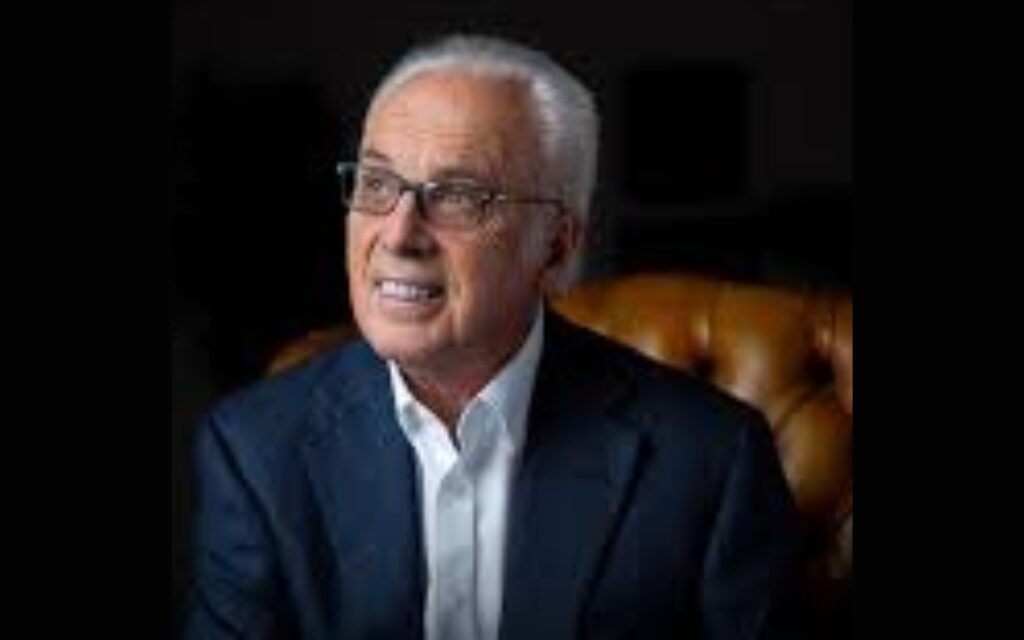This is the third post in a five-part series titled “Jesus in the Old Testament,” showing different ways Jesus appears in the Old Testament.
Philip found Nathanael and said to him, “We have found him of whom Moses in the Law and also the prophets wrote, Jesus of Nazareth, the son of Joseph.”
John 1:45
The previous post in the series was about types, which are people or things that behave like Christ. Illustrations are also people who have parallels with Jesus; however, the New Testament does not identify them as such. These are kind of unofficial types, and there is a plethora of them!
Most of the heroes of the faith parallel Christ in one way or another. But since these analogies result from our study rather than Scriptures, it is mostly conjecture. So we may not agree on everything.
Nevertheless, here is a list of a few people I believe are unofficial types of Christ and some ways they foreshadow Him.
1. Isaac (Genesis 22:1-9)
Both Isaac and Jesus’ births were foretold and miraculously conceived. Sarah was past child-bearing age when she gave birth to Isaac, and Mary was a virgin when she gave birth to Jesus. (Genesis 18:9-10, Luke 1:30-35).
They were both beloved as the only son of their fathers and were to be sacrificed by their loving Fathers (Genesis 22:2, Matthew 3:17, John 3:16).
The sacrifice was to happen on mount Moriah for Isaac and Jesus, and both carried the wood of their sacrifice on their backs. Isaac bore the wood for the burnt offering, while Jesus carried the cross (Genesis 22:6; John 19:17)
Both Isaac and Jesus submitted to their fathers. Isaac didn’t resist when Abraham bound him on the altar (Genesis 22:9). And Jesus willingly gave His life (John 10:18).
However, the illustration ends here because the angel of the Lord (a Christophany) prevented Abraham from killing Isaac and provided a Ram instead. It might be why Isaac is not a type of Christ in the New Testament despite the strong resemblance.
2. Joseph (Genesis 37)
Joseph, son of Jacob, is one of the Old Testament characters whose life is most like Jesus.
They were both firstborn of their mothers and dearly beloved by their fathers (Genesis 37:3, Matthew 12:18).
Both Joseph and Jesus had brothers who didn’t believe them and mocked them (Genesis 37:4-5, John 7:3-5).
They were both stripped of their garments. Joseph’s brothers stripped him of his robe (Genesis 37:23), and the soldiers took off Jesus’ garments and tunic (John 19:23).
They were both sold for money. Joseph’s brothers sold him into slavery for twenty shekels of silver (Genesis 37:26-28). And Jesus was sold for thirty pieces of silver (Matthew 26:15).
They were both falsely accused. Joseph was charged with rape by his master’s wife (Genesis 39:20), while false witnesses testified against Jesus (Matthew 26:59-61).
Joseph was in prison with two other guilty men; one was pardoned while the other died (Genesis 40:1-3; 20-22). Jesus was crucified next to two men, both physically died, but one was forgiven and received eternal life (Luke 23:32; 39-43).
They were both exalted after their humiliation. Pharaoh set Joseph to be ruler over all of Egypt, his house, and people (Genesis 41:40-44). God set Jesus at His right hand and gave Him dominion over all things (Matthew 28:18). All knees bowed before both (Genesis 41:43, Philippians 2:10).
3. Boaz (Ruth 1-4)
Ruth was a Moabites who married a Jew. After her husband died, she followed her mother in law, Naomi back to Israel. As they were both poor, Ruth tried to gather grain in a nearby field. It led to a series of events that made her meet Boaz, the owner of the field.
Boaz was a wealthy Bethlehemite with family ties with Naomi. When he learned of Naomi and Ruth’s situation, he chose to redeem Naomi’s family name by marrying Ruth. Notwithstanding, it would cost him his inheritance.
Jesus is our ultimate redeemer (Titus 2:14). Like Boaz, he took a gentile for a bride and restored her. And as Boaz made it possible for Naomi and Ruth’s lineage to live on, Jesus makes it possible for us to live forever and become heirs of God (Romans 8:17).
4. David (1 Samuel 17)
King David is another character whose life bears a striking resemblance to Jesus.
He was a king and a shepherd like Jesus. He was a man after God’s heart, a faithful servant; his brothers rejected him; he had mortal enemies who sought to kill him, and, most importantly, he trusted God above all.
God even said He would raise the messianic King after David (Jeremiah 30:9), who would descend from David’s lineage (Jeremiah 23:5).
David also pre-enacted the victory of Jesus on a few occasions.
When David kept his father’s sheep, a lion and a wolf came and took a lamb away from the flock. David went after them and rescued the lamb and killed the bear and lion (I Samuel 17:34-35). Jesus is the good shepherd who guards the flock of His Father (John 10:11). He also risked His life to rescue His wayward sheep (John 10:15) and destroyed the enemy, which is death (1 Corinthians 15:26).
Then there is the famous encounter with Goliath (1 Samuel 17:41-50).
Goliath was a Philistine who terrorized the Israelites, and no one could defeat him. But David came forward to fight him and won the battle. It foreshadows Jesus’ victory over sin and death for us. Both David and Jesus used unlikely means to achieve success; David used a slingshot, while Jesus went to the cross. Both their victories benefited others. David’s victory brought freedom to the Israelites from the Philistines, while Jesus’s brought freedom from judgment to the world.
5. Solomon (1 Kings 1-11)
Solomon was the son of David with Bathsheba and the last King of Israel. While David’s life parallels Jesus first coming, Solomon’s life parallels Jesus’s second coming when he establishes his messianic reign. For instance:
They are both called a son of David and were both wiser than all their contemporaries (Luke 11:31).
Solomon was a man of peace (1 Chronicles 22:9), and his kingdom was tremendously peaceful (1 Kings 4:24-25). Jesus is the prince of peace (Isaiah 9:6), and in His future kingdom, peace will be everlasting (Isaiah 9:7).
Solomon built the temple of the Lord, which was his physical dwelling place (2 Samuel 7:12-13), Jesus became the temple of God (John 2:19).
Nations came to bring tribute to Solomon (1 Kings 4:21; 1 Kings 10:23-25) Nations will also come to Jesus to worship Him (Zechariah 14:16; Haggai 2:7; Isaiah 60:3-7).
6. Samson (Judges 13-19)
Samson was the worst judge of Israel. He was a drunkard, a sexually immoral, and lived for worldly pleasures. Nevertheless, he made it to the Hebrews hall of faith, and his life surprisingly parallels Jesus’s.
An angel announced both his birth and Jesus’s. The angel of the Lord came to Manoah and his wife and told them they would conceive (Judges 13:3). Angel Gabriel told Mary she would give birth (Luke 1:30-31).
Both their births were miraculous as Samson’s mother was barren, and Mary was a virgin. The angel also announced that both Samson and Jesus would be set apart for ministry (Judges 13:2-3, Luke 1:26-27), and both would become a savior of their people (Judges 13:5, Matthew 1:21).
Samson acted in the power of the Holy Spirit (Judges 14:6;19). The Holy Spirit descended upon Jesus during His baptism (Matthew 3:16).
Both were handed over to the Israelites (Judges 15:9-13, Matthew 27:1-2), and were both betrayed by someone closed to them. Samson was betrayed by Delilah, his lover (Judges 16:18-21), while Jesus was betrayed by Judas, his disciple (Matthew 26:47-50).
Both Samson and Jesus died to destroy their enemies, the philistines, and sin, respectively. And they both achieved more in their death than they ever did alive (Judges 16:30, John 12:31-32; Hebrews 2:14, 1 John 3:8).
7. Mordecai (Esther 1-10)
Mordecai was a Jew who lived during the Babylonian exile. He played a crucial role in the book of Esther and is like Jesus in a few ways.
They both had, mortal enemies. Haman hated Mordecai and planned to kill him (Esther 5:9;13), The Pharisees and other high-ranking Jews hated Jesus and planned to kill him (Matthew 12:14). But they both triumphed over their enemies (Esther 7:9-10, Matthew 28:6).
They both had a triumphant ride in a city (Esther 6:11, Matthew 21:1-11 ).
The King elevated Mordecai, and he gained more authority than he ever had before. He became great among the Jews, sought the welfare of his people, and spoke peace to them (Esther 10:3). God elevated Jesus to his right hand and has given Him all authority (Matthew 28:18). Jesus came to rescue His people and gave them peace with God (Romans 5:1).
Mordecai sent letters throughout Babylon to proclaim the news of the salvation of the Jews (Esther 9:20; 30-31). Jesus commissioned His disciples into all nations to share the gospel (Matthew 28:19).
The list could go on for a while as they are many people whose life parallels Christ in some way. However, we must be careful not to twist Scriptures when looking for illustrations. Always make sure it is Christ-centered, it points forward, and does not introduce a new theology.
Grace and peace to you!









